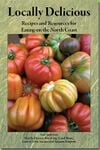Obesity has reached epidemic proportions in the United States of America. High amounts of fat, sugar and salt in the processed and industrial foods found in our fast-food restaurants, supermarkets, and often schools, contribute significantly. For many reasons, industrially-produced food is often cheaper than fresh, organic, local food, adding to the problem. We cannot fully cover this issue in this book, but Paul Roberts has an extensive discussion in his book, The End of Food.
According to the Center for Disease Control and Prevention (CDC)[1]
| In the U.S., approximately two-thirds of adults and one-fifth of children are obese or overweight. Being either obese or overweight increases the risk for many chronic diseases (e.g., heart disease, type 2 diabetes,certain cancers, and strokes). Reversing the U.S. obesity epidemic requires a comprehensive and coordinated approach that uses policy and environmental changes to transform communities into places that support and promote healthy lifestyle choices for all U.S. residents.[2] |
The report noted above lists 24 recommendations for reducing obesity, acknowledging that being obese is more than a matter of individual choice. For people to make healthy choices, healthy food options must be available and accessible. The report suggests steps that communities can take to create these healthy options. Three of the recommendations that relate to local food are discussed below.
Communities should increase availability of healthier food and beverage choices in public service venues. As a community, we have started on this work. Humboldt-CAFF is working to bring more fresh local food into our schools and restaurants. Mad River Community Hospital has started their own garden to provide fresh food for their patients, and Food for People (the local foodbank) works with farmers and gardeners to provide fresh food to people in need. United Indian Health Services grows fruits and vegetables on its two-acre Arcata farm and provides the food to the local Indian community as one way to help prevent and control diabetes and improve health in general.
Communities should improve availability of mechanisms for purchasing food from farms.
| According to M. Hamm of Michigan State University, in the CDC report:
Mechanisms for purchasing food directly from farms include farmers’ markets, farm stands, community supported agriculture,“pick your own,” and farm-to-school initiatives. Experts suggest that these mechanisms have the potential to increase opportunities to consume healthier foods, such as fresh fruits and vegetables, by possibly reducing cost of fresh foods through direct sales; making fresh foods available in areas without supermarkets and harvesting fruits and vegetable at ripeness rather than at a time conducive to shipping, which might improve their nutritional value and taste. |
The Tri-County region of Del Norte, Humboldt and Trinity has moved toward this recommendation. This area has 13 farmers’ markets, 13 CSA farms and several grocery stores actively promoting local food.
Communities should provide incentives for the production, distribution, and procurement of foods from local farms.
| According to the CDC report,Incentives to local food production can include forming grower cooperatives, instituting revolving loan funds and building markets for local farm products through economic development and through collaborations with Cooperative Extension Services. Additional incentives include but are not limited to farmland preservation, marketing of local crops zoning variances, subsidies, streamlined license and permit processes and the provision of technical assistance. |
Our local communities have taken a few steps, but there is much more work to be done. Projects exist in Del Norte and Humboldt Counties, funded through grants or economic development groups, for food processing and preservation facilities. None are in operation yet but the projects are moving in the right direction. A commercial or cooperative infrastructure is needed, as are county and city policies that protect agricultural land, making it easier for farmers to produce the food we need.
A Note From the Editors:
We realize that eating regional food is not the single answer to all the issues of the global food system. It is, however, one important answer over which we have control. Every time we spend money for food, we vote for the future that we want. Changing our food system to be more energy efficient and healthier for us as individuals, as a local community, and for the entire world starts with each of us. We may not be able to control our national or state government and effectively blunt the influence of the handful of agri-businesses that now control the national and even global food system, but we, and the tens of millions of other people who are aware of the issues, can change the system from the dirt up.
Please use our resource lists in the appendices and the recipes in the cookbook section of this book to help you get started.
